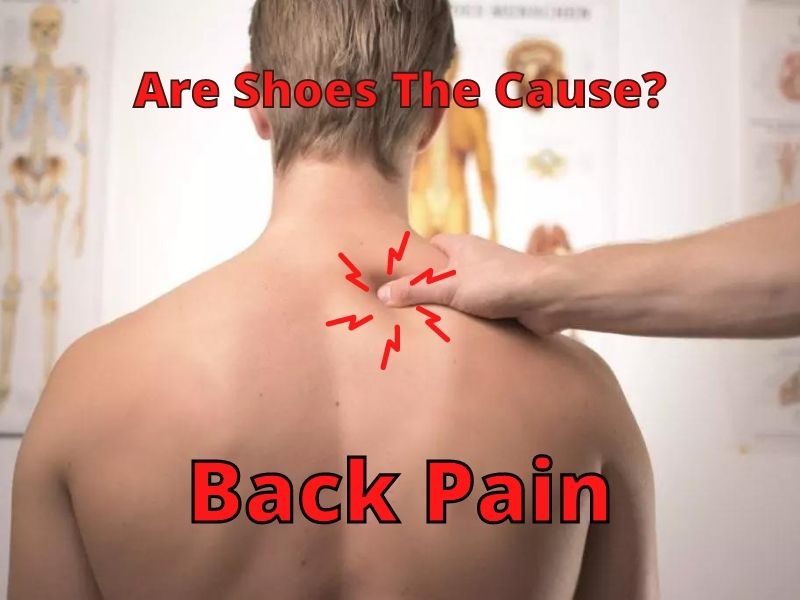When I walk for more than 2 miles I can start to feel pain in my lower back. I’ve noticed that the shoes I wear can make a difference in whether I feel some or no back pain.
Some types of shoes can lead to back pain, but you may have also injured your back at some point and inflammation or nerve issues starts to cause you pain. Either way, the shoes you wear can have a huge impact on how much back pain you feel.
One pair of shoes that I now wear has a lot of foam cushioning in the sole. It has prevented me from feeling pain since I have gotten them. Along with your shoes, trying techniques for pain relief can make a large impact on how you feel.
Here’s a chart for ideas to keep your feet healthy.
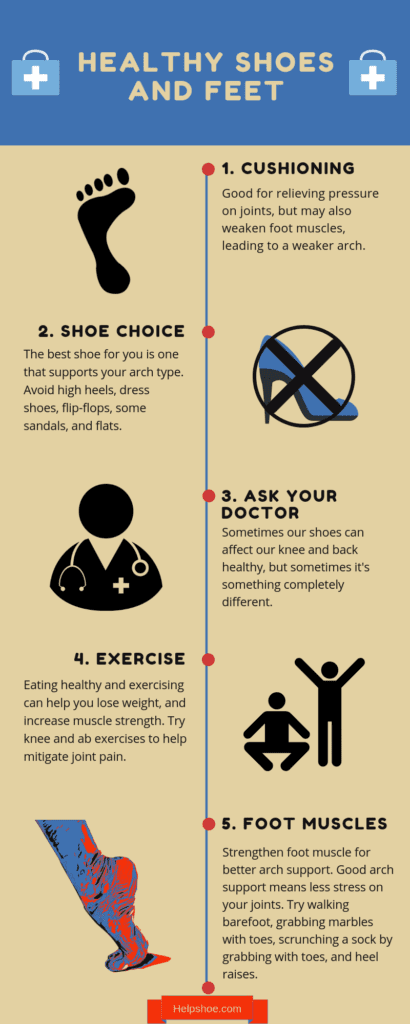
Shoes To Wear and Avoid
Cushioning
When I look for shoes now, I am looking for higher-quality shoes that have plenty of cushioning. The cushioning will have an impact on how much force is applied to the joint with each step. Ideally, a good sole will have the ability to absorb the energy from each step, reducing the impact on the joints.
When looking for shoes to wear for back pain do your research. Be aware that not all of these may work for your back pain. Read reviews and find out about the shoe and its characteristics.
Some of the shoes you might consider are those that have extra thick foam, gel, air pockets, memory foam, and spring-like designs.
If you have back pain, avoid shoes that are stiff, have little foam cushioning, and do not absorb the impact of each step.
Arch Support
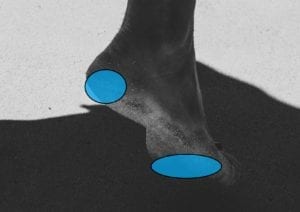
Everyone has a different type of foot arch (article). In addition, each person’s weight impacts how their arches function. So, the same shoe that feels good on one person, will feel uncomfortable and provide less back pain relief with another.
When walking or running your foot’s arch will support your body and distribution its weight to your heel and the ball of the foot. Arch support can help aid in pain relief by helping your feet support your body properly.
Find out your arch type. It can be a low arch, medium arch, or high arch.
- Get a baking pan or container and pour a shallow layer of water inside.
- Get cardboard or paper to fit the size of your feet.
- Step in the pan and then on the paper in a normal standing position.
- Step off and look the foot mark left behind and determine your arch type.
- Low arches will show most of your footprint, medium arches will show your footprint without inner arch area, and high arches will show mostly heel and ball areas of the foot.
Low arches may need arch support for proper foot alignment to control pronation of your foot and reduce or prevent pain.
Medium arches are most common, and having good arch support will help cushion and absorb energy from walking or exercise.
High arches will most likely need firm arch support for cushioning since your heel and the ball of your foot are getting a lot of direct impacts. (Amazon Link)
You can customize your shoes to fit your arch type for maximum support and pain relief.
If your shoe is lacking the arch support that you need, consider getting an orthotic insole. Generic orthotics are priced at about $20 or more (Amazon Link). Custom-made orthotics will start about $100 or more. But there’s no guarantee that they will do better than regular arch support.
Each shoe is designed with different insoles. So choose a shoe that supports your arch type and this will impact your back.
Unsupportive Shoes
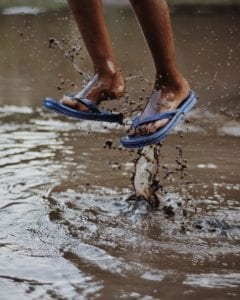
Avoid shoes that are not supportive.
High heels are not positioned correctly to support your weight and place an unbalanced amount of body weight in the balls of your feet.
Flats, sandals, and flip-flops usually come without the arch support needed, to help if you have back pain. Alternatively, consider a brand that has designed their shoes with arch support built-in.
Dress shoes are nice for looking your best, although some lack proper arch support or sole cushioning. Search for a brand that has proper support or you can add an orthotic insole, although there may not be enough room in most dress shoes.
Shoes are Just Part of the Solution
Shoes are important for reducing the amount of joint stress and back pain some people feel.
A doctor should examine you to determine the root cause of your back pain. It may be something other than what you have already considered. The correct shoe type and arch support can help with pain, but a doctor may be able to help more because they can use X-rays and MRI to find out what’s wrong.
Some back issues are caused by things we don’t notice from day to day. People may have posture problems, and weight issues, or may slouch in chairs for long periods. Some of these things we don’t recognize until someone points them out.
Exercises can strengthen your back and feet, relieving some of the pain caused by your back issue. After consulting with your doctor, try some of these exercises for strengthening (article) your muscles.
- Try strengthening your abs. Be careful here. You may cause more pain if not done properly. Exercises that maintain a straight back while lifting your legs from a standing or laying down position can improve abdominal muscle strength.
- Try strengthening your knees. This can help with the overall absorption of shock from walking and running, even if you don’t have knee pain. Trying lunges, leg extensions, and squats can support the joint and relieve some pressure.
- Try weight loss. It’s not so easy, but losing weight will improve the overall pressure relief on your arches and joints, providing some back pain relief.
- Try feet exercises. Exercising your feet can help strengthen injuries and add muscle support. Your arch will absorb more impact, hopefully reducing back pain.

Here’s a couple to try while sitting on the couch watching TV.
- Foot tapping. Keep your heel on the ground, lift your foot, and tap on the ground.
- Grabbing items with your toes. Get small items and grab them with your toes one at a time. Pick it up and place it in a new pile.
- Curling your toes. Take a sock or article of clothing and grab the item by curling your toes under it, thus pulling the item closer.
- Heel Raises. Keep the ball of your foot and your toes on the ground and raise your heels as if you’re are reaching high.
What Can I Do RIGHT NOW for Back Pain?
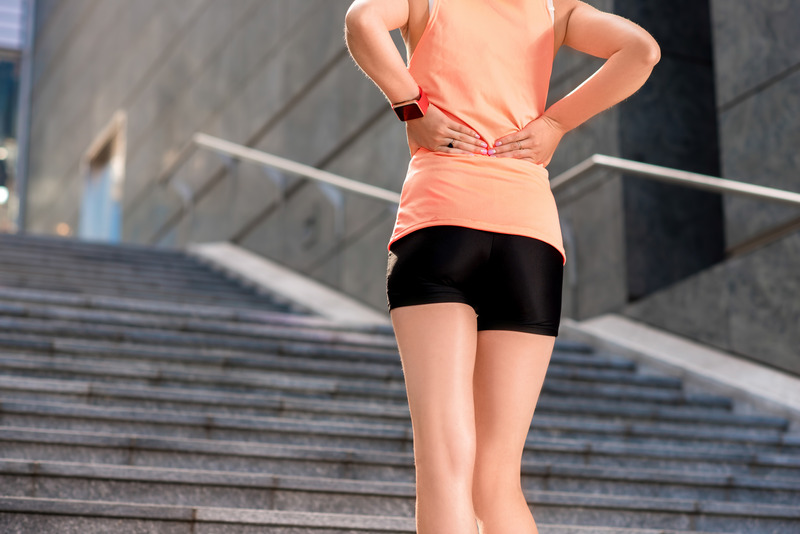
To find the shoes you usually wear and run through a checklist for your shoes. Checking for issues will help you keep the shoes that are helping and get rid of the ones that are hurting you.
Back Pain Relief Shoe Checklist
- Do the shoes have the correct arch support for my foot?
- Do the shoes have adequate foam to cushion my walking and exercise?
- Are the shoes worn out? Shoe soles compress and have a lifespan of 6 – 12 months with regular use.
- Do my ankles look properly aligned when I look in the mirror with my shoes on? Improper support for some arches causes ankles to pronate, increasing back pain.
- Is the sole on my shoe unevenly worn? This may indicate your foot needs arch support to straighten out your foot. It’s probably a good idea to replace the sole or the shoe with uneven soles. It may lead to more foot, knee, and back problems in the future.
- Do I wear these shoes often? If you only wear them once a month for an hour, you are less likely to need to get rid of them.
Thanks for visiting Helpshoe.com
Related Questions
How to Get Long-Term Back Pain Relief?
Long-term relief from back pain is important for a healthy life. Making a commitment to your health and happiness is the first step. While some may suggest surgery, others will tell you to use pressure relief techniques and do exercises the strengthen the area.
Will Orthodics Help With Back Pain?
Orthotics will help most people with their joint pain issues, including back pain. Most orthotics help with arch support and add cushioning for more impact absorption than the sole alone can provide.

